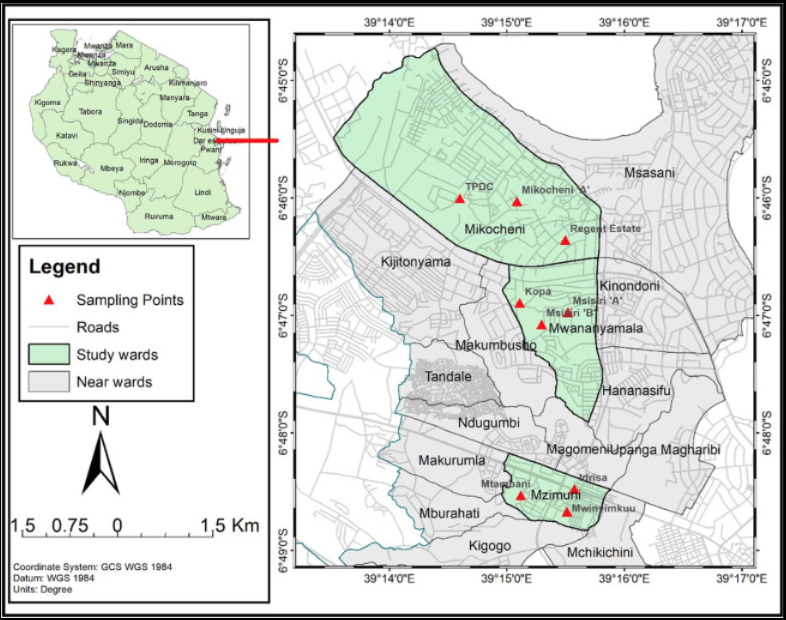Authors:
Abstract
Background: Tanzania has experienced periodic dengue outbreaks with increased incidence since 2010. However, there is limited information on vector dynamics and transmission risk in most parts of the country. This study was conducted to determine Aedes mosquito abundance, larval indices and dengue virus infection rate as risk indicators for DENV transmission in Kinondoni district, Dar es Salaam, Tanzania.
Methods: A cross-sectional study was conducted in three wards of Kinondoni district in Tanzania between December 2019 and January 2020. In each ward, three streets were randomly selected for adult and immature mosquito sampling. The adult mosquitoes were collected using Mosquito Magnet traps, while mosquito larvae and pupae were inspected in water-holding containers in the selected household compounds. The detection of dengue virus (DENV) in female Aedes mosquitoes was done using a one-step reverse transcription-polymerase chain reaction (RT-PCR) method.
Results: Of the 1416 adult female mosquitoes collected, Ae. aegypti accounted for 16.8% (n = 238). A total of 333 water-holding containers were inspected and 201 (60.4%) had at least an Aedes larvae or pupae. Water-holding containers supporting the breeding of Aedes larvae and pupae included discarded car tires, flowerpots and small and large plastic containers. The overall House Index, Container Index and Breteau Index were 55.1%, 60.4% and 114.2, respectively. None of the 763 female Aedes mosquitoes tested by RT-PCR was found to be infected with DENV.
Conclusion: The presence and abundance Ae. aegypti mosquitoes and the large proportion of water-holding containers infested with the mosquito larvae and pupae put residents of Kinondoni district at high risk of DENV transmission. Our findings emphasize the need for continuous mosquito vector surveillance and control to prevent the possibility of future DENV outbreaks in Tanzania.







